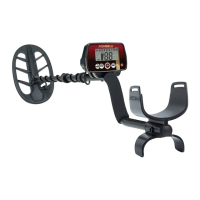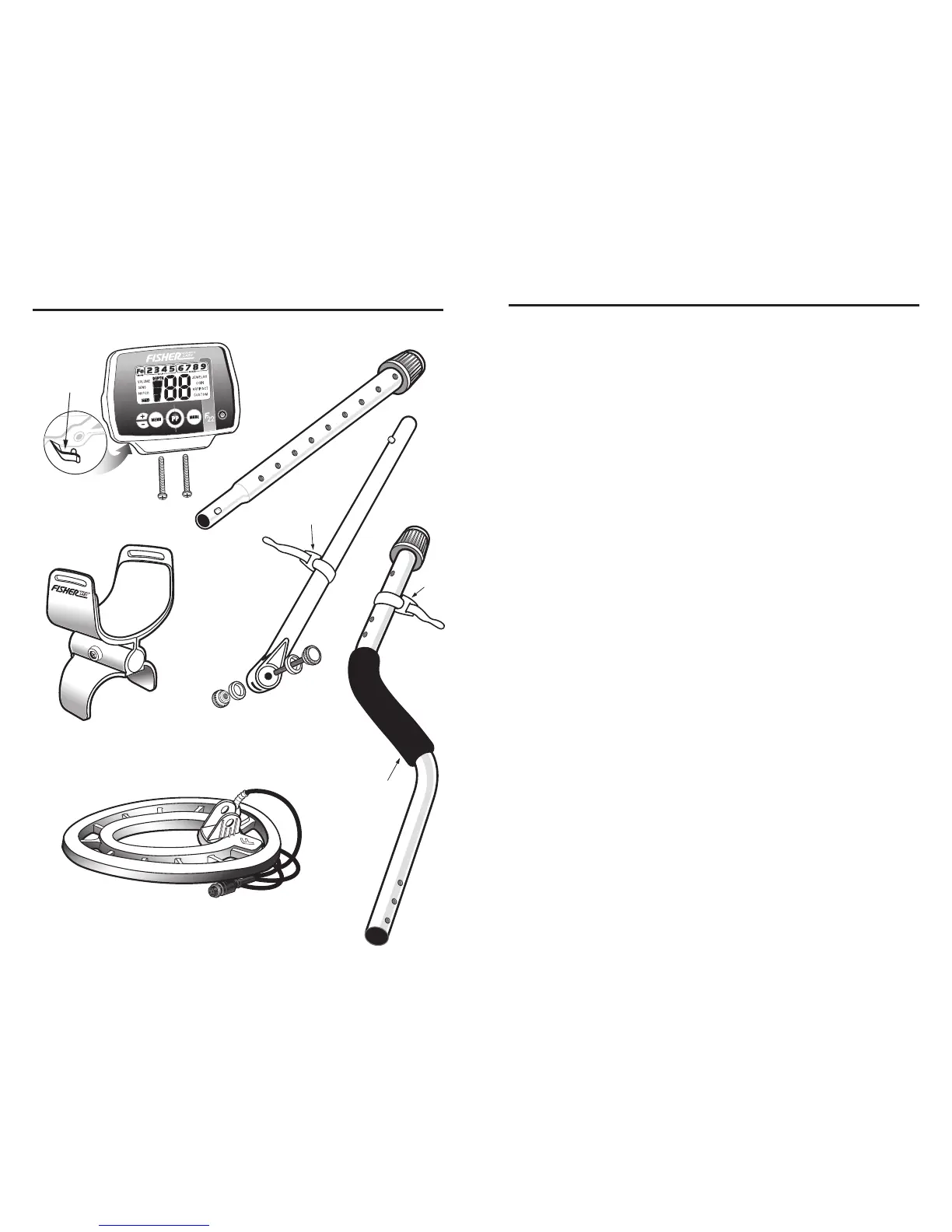4
3. Searchcoil
O-Ring
One installed on coil connector
and a replacement O-Ring included
in manual bag.
4. Middle
Stem
5. Lower Stem
with Bolt &
Knurled Knob
attachment
6. S-Rod
2. Armrest Assembly with
Screw and Lock-Nut
1. Control Housing
with 2 screws
21
Headphone
Jack Cover
1. This detector comes with a waterproof searchcoil. The searchcoil can be
completely submerged into water. The control housing is weatherproof
but cannot be submerged in water.
2. BURIED UTILITY LINES. This hobby metal detector is not designed to
locate buried pipes or cables. First Texas Products manufactures a
complete line of pipe and cable locators for this application. These are
sophisticated instruments with functionality different from your hobby metal
detector.
3. SEVERE SOIL CONDITIONS. While this detector has proprietary circuitry
to cancel out minerals naturally occurring in most soil types, it cannot
penetrate the most severe soils and it is not intended for use on wet
sand saltwater beaches. However, it is well-suited for detecting on dry
sand. Saltwater is highly conductive and requires a more sophisticated
type of detector. First Texas Products offers such types of detectors. Other
highly mineralized soils, such as those found in some gold prospecting
sites, may also limit this detector's capability. If the detector tends to
overload it could indicate you are in an area containing such severe soils.
4. TARGET-ID. The detector's Target-ID system calculates and displays the
most probably identification. Target-ID is affected by soil conditions, the
searchcoil's distance from the target, the length of time the target has been
buried and the target's proximity to other dissimilar targets. Very large
metal objects can overload the detector and may be classified
inaccurately.
5. REDUCE SENSITIVITY. The primary purpose of the Sensitivity control is
to allow the operator to reduce the sensitivity of the detector. All
detectorists desire to find objects at maximum depth. However, in today's
environment there is a never-ending variety of devices emitting EMI
(Electromagnetic Interference) that can interfere with this detector.
There will be environments where the detector cannot operate at
maximum sensitivity. This is not a defect. If you find yourself in such an
environment, reduce the sensitivity of the detector. Some environments
may have so much EMI it is impossible to detect there. Both overhead
power lines and buried power lines can interfere with this detector. Power
line capacity may be quite different during certain times of the day. For
instance, peak hours of electrical use that can occur around 6 p.m. can
lead to a lot of EMI. If you experience power line interference, try returning
to a given area at a different time of day.
CHARACTERISTICS & LIMITATIONS

